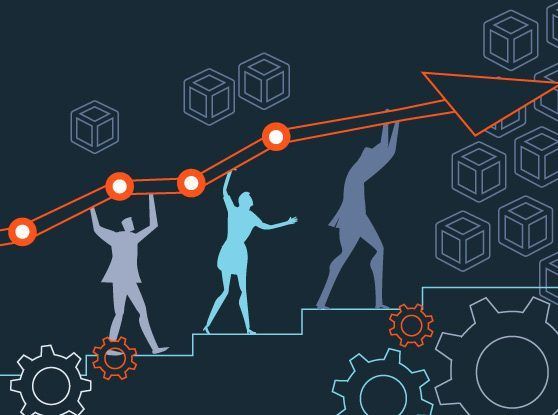Growth Gurus: Nearpod & The Classroom of The Future

Nearpod co-founder and CEO Guido Kovalskys will be the first person to tell you that technological evolution in the classroom has been a challenge in the K-12 education space. Schools are risk-averse, strapped for cash, and slow adopters of technology. The classroom remains stubbornly analog, all the while trying to engage with students who are better versed on the mechanisms of a Snap than a final grade calculator.
Guido knew about these barriers when he decided to jump into the K-12 education software market in 2012 with his co-founders Felipe Sommer and Emiliano Abramzon. Since then, Nearpod has become a recognized leader in the EdTech space. In 2016, the company was featured on the Inc. 5000 List of Fastest-Growing Private Companies in America.
In this blog, Kovalskys talks about Nearpod’s journey, the accelerating disruption of K12 education by mobile and cloud technologies, and his predictions on the classroom of the future. In summary:
- While school districts are slow adopters of technology, connected devices are being used with increasing frequency as instructional tools in today’s classrooms.
- The prevalence of mobile and the cloud is enabling classroom technology adoption.
- Ongoing challenges with student engagement represent a concern for school districts – but an opportunity for EdTech visionaries looking to disrupt traditional models of learning through engaging students in different ways
- Digital content adoption has finally arrived in schools, and the adoption trend is expected to explode in the coming years.
- Technology is an important balancing factor for students in at-risk schools, although investment in infrastructure is the first, and most important, step towards real change.
Introduce us to Nearpod: why was it founded, and what does it do?
We started Nearpod in 2012 with the objective of solving a challenge that we saw among teachers in K-12 classrooms, which is how to use digital content to engage students.
We realized that mobile devices and laptops were making their way into the classroom – and we knew that this was going to be a game changer for traditional methods of instruction. So, we decided to build a platform to allow teachers to structure and deliver content digitally.
When we started Nearpod, we were warned by our advisors about the conventional narrative that EdTech is a bad business to get into – very bureaucratic, very long sales cycles and complex decision making structures. But we were convinced of the strong need to help teachers engage students, and that if we could solve for it in an easy-to-adopt way, then we would be able to build a business, no matter how dysfunctional the industry. We began by deploying a simple software solution that was only available for Apple’s iOS platform. We were on multiple platforms a year later, and we’ve come a long way since then.
If the need is there, why has it taken so long for educational technology to reach the classroom?
Schools, teachers, and districts are slow adopters of technology and everything else. It isn’t surprising that most public institutions react slower to change than their private counterparts, but in K-12 even the private schools are more conservative in changing their habits than private corporations.
When you have kids, you realize that you don't want people experimenting too much on them. You want to be at the frontier, but not at the expense of your children – this is a natural tension, and it gets translated into the behaviors of school boards and the teachers.
When it comes to teaching young students, we tend to be conservative. Having said that, classrooms today are faced with several disruptive factors.
Can you elaborate?
Firstly: Technology today is so much easier to deploy and use. Mobile and cloud have changed the way we all use technology, and I think that we will see a pick-up in pace at public institutions very soon.
Secondly: Engaging kids is so much more challenging. Third party research has shown that there is a strong correlation between classroom engagement, student engagement, and learning outcomes. That said, attention spans are at an all-time low. So how do you promote engagement?
The truth of the matter is that if you think back to the best teacher you had in primary or secondary school – that one teacher that you still reference in conversation – that person would likely fail miserably today because students are more demanding, harder to mobilize and expect several more dimensions of learning than we did when we were in school.
What about the correlation in education between financial stability and academic success? Can technology make an impact there?
It’s true that students with fewer resources have lower success rates. Over the last five years, I've visited hundreds of schools all over the country. I've talked to teachers and administrators, and there is no doubt; your zip code still determines the quality of your education. It’s a fact. But I am convinced that technology will be an equalizing factor.
How?
Well, at the risk of a adding a shameless plug, we built Nearpod around this concept – we came into the market with a free product that any teacher can use on any device (no matter how tech savvy or not). If you have a browser and you’re willing to create your lessons or download the free ones, you can benefit from next-gen technology in your classroom. Think of this as interactive PowerPoint, or information delivery on steroids. This effectively erodes the resource barrier present in traditional education where only the wealthier school districts get access to technology.
The result has been incredible: 60-70% of our daily active users engage with us via our free platform, and many of them are located in districts that are traditionally rated at the bottom end of the resource spectrum. Adoption is picking up pace as word-of-mouth spreads the information among teachers.
What are the top emerging trends in education technology?
I would divide my answer into different areas.
At the foundation is, device deployment, infrastructure, and connectivity: In the past four to five years, we've seen around 25 to 30 million connected devices being deployed to schools. About half of the student population in the U.S. has been directly affected by a device deployment that was led by a program through the school, the district, the state, some federal funding, even the PTAs – mostly a top-down deployment strategy.
That said, in the last year bring-your-own-device (BYOD) has become a much more popular model and may soon turn into the prevailing strategy for device adoption. At this point, everyone realizes that kids will access whatever content they want to access, so blocking it on the school’s network doesn't make a difference. In a way, schools are being forced to relinquish control. So now, the challenge is in teaching students to be responsible with their devices. This will mean that districts will be forced to invest more in professional development and digital citizenship programs that educate both teachers and students on responsible device management.
On top of this foundation, there's digital content. This has been an elusive promise for the past decade, and somehow it never materialized in the EdTech space. I believe that we're about to see a radical change regarding content consumption. Pearson, one of the publishers that has dominated the classroom for years, announced recently that most of their print businesses have seen very slow or no growth at all. Simultaneously, we've seen a considerable uptick in digital content procurement on the part of the districts and schools. This is naturally going to open up a lot of doors for companies like ours – and invite some players into a space that has been relatively niche thus far.
Do you anticipate that these changes in content delivery will have a material impact on the makeup of education? Is the traditional classroom soon to be a dinosaur?
That is a great question. From a productivity standpoint, the idea of self-guided instruction – teaching without a classroom and teachers – would be the natural evolution and there are a lot of companies working on self-guided models. Today, the two biggest cost drivers in K-12 (and broader education) are human labor and infrastructure – the schools and the teachers. If we are suddenly capable of teaching 200 students with one instructor and can fit 3,000 students in a school "building," even though the building only physically fits 500, our educational system will change dramatically from a productivity standpoint.
However, there is an important social aspect to K-12 that goes beyond the learning of academic skills. We put our kids into schools not only to learn reading, math, and science – we put them through the system to become effective social creatures. They interact with other kids; they interact with adults, they learn about authority, they learn about rules. They learn about what we call executive functions, which are not academic curriculum but are required for them to become adults that contribute to society.
We’ve heard about a hybrid model of education. What is this?
Hybrid, [also called blended learning], is a combination of self-paced learning, synchronized learning, instructor-led learning, and project-based learning, with a "coach" or "mentor" figure heavily involved in the management of those projects. Personally, I believe that this is the more likely model of evolution.
Up until now, hybrid has been the center of many "trendy" discussions, but it has been rare in reality– adopted here and there by a few charter, private, and progressive schools. The concept is not new, but I would guess that less than 10 percent of the schools around the country are currently engaged in such modern pedagogy strategies. Technology is changing this, and significantly favors this learning over conventional methods, so I believe that the hybrid learning model will displace traditional education, potentially by the end of the decade.
I use the word "potentially" because we can't forget that education today is still deeply entrenched in the "physical space" – before classrooms become digital, they must first become digitally friendly. Infrastructure in the form of tools, furniture, and even seating layouts has a dramatic impact on teaching methods – and we are already witnessing significant shifts on this front.
Any further thoughts on EdTech evolution?
I revert to my earlier point - that technology can only do so much. We can certainly start to erode the negative effects of income distribution, increase productivity, and mobilize our students with free software and increased grants, but to make the "zip code" obsolete, our districts need to be willing to invest in the foundational infrastructure to cement real change. I'm looking forward to seeing how that evolves – and then we can start talking about futuristic models of learning.











